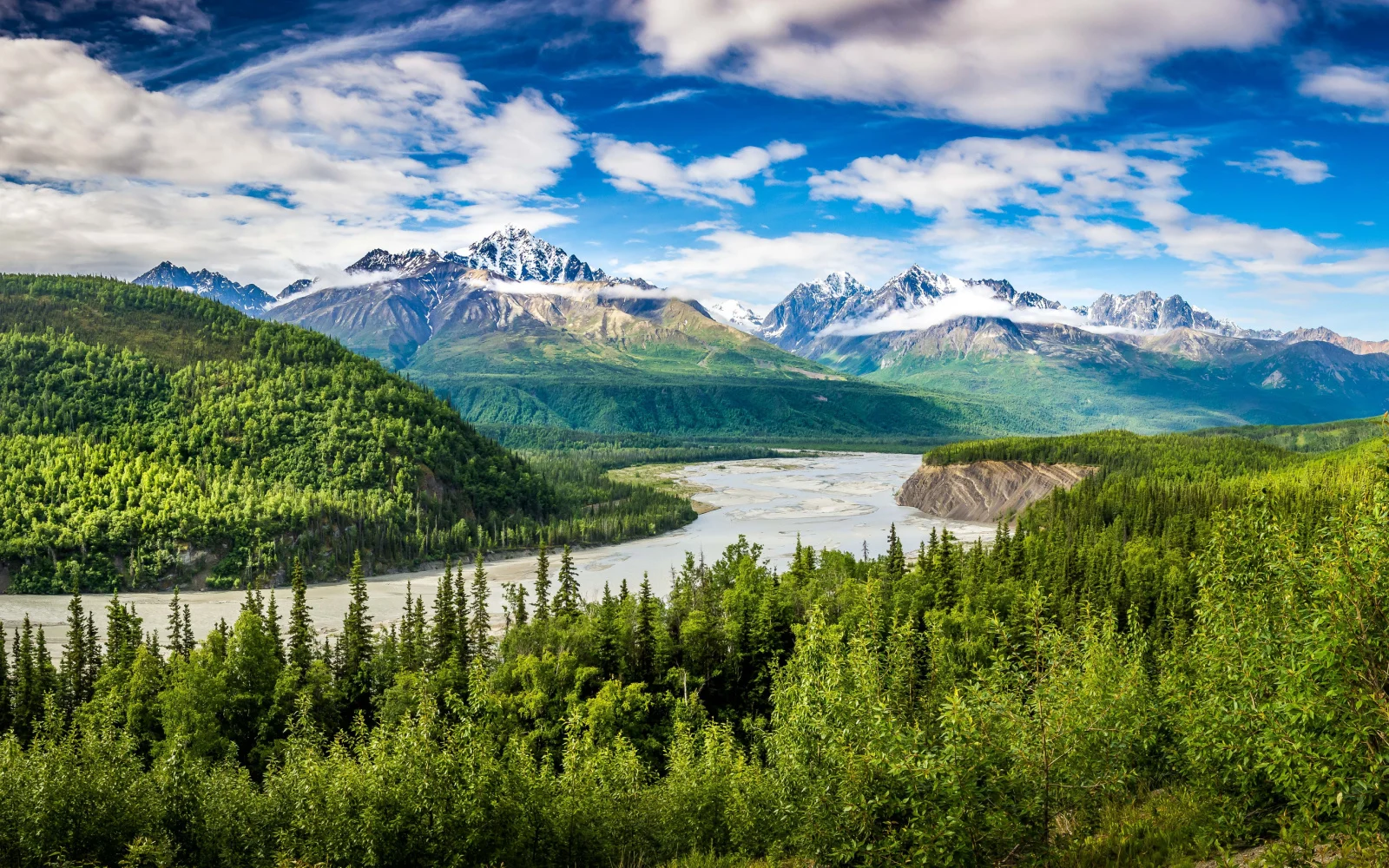Is Alaska safe to visit in 2025?
Alaska is generally safe for visitors, but its extreme climate and natural hazards require preparation. Wildlife encounters with bears, moose, and wolves are possible and should be approached cautiously. While crime rates are relatively high, they primarily affect locals, making nature and weather the primary concerns for tourists.
Alaska certainly earns the nickname “The Last Frontier.” The state to the frozen north of all the other regions of the United States is one of the last truly wild places in the country, maybe even on the planet.
Visitors flock to Alaska to get up close and personal with nature, see the elemental power of the Arctic for themselves, and come face to face with wildlife such as bears, moose, and orcas.
Those who like comfort opt for Alaskan cruises, while those who prefer roughing it have thousands of miles of trails to choose from. Alaska is definitely a dream destination for any nature lover, but you might be wondering if it is safe to visit. Here’s our expert take.
Is Alaska Safe to Visit in 2025?
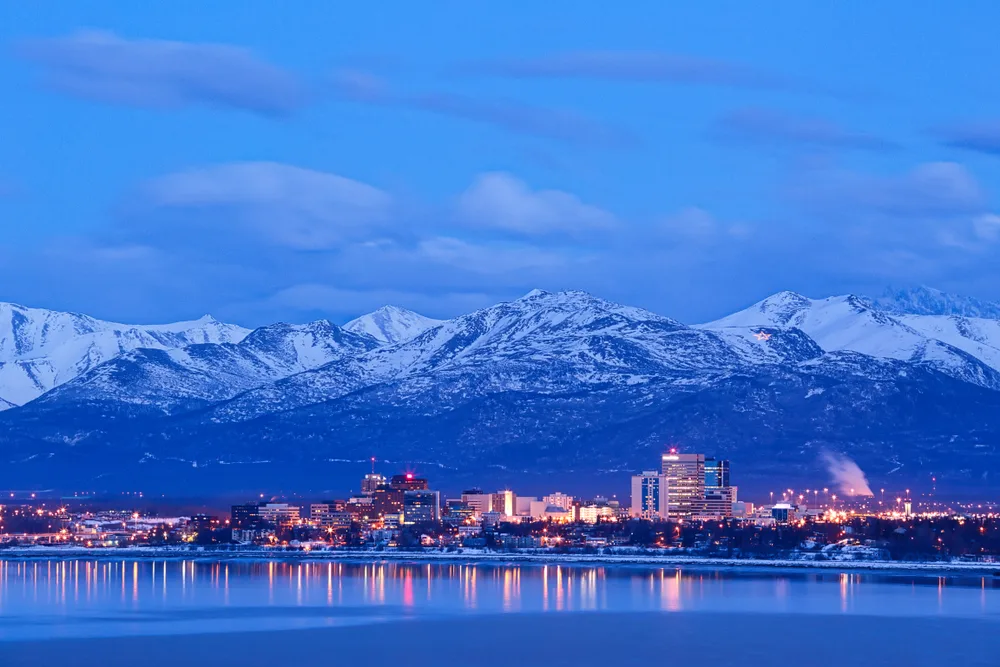
Rex Lisman/Shutterstock
Yes. Generally speaking, Alaska is safe to visit. However, this is a destination that requires a bit more preparation than elsewhere in the United States due to the sheer power of nature present in the state.
You don’t want to accidentally freeze or wind up on the wrong side of a bear. Another concern visitors have is the high crime rate, but crime usually affects locals, not visitors.
The primary cause of concern when visiting Alaska is the extreme climate, which means that the state is prone to natural disasters.
According to the Alaska Science Center branch of the USGS, there are many natural hazards that you can encounter when visiting Alaska, including earthquakes, flooding, volcanic eruptions, tsunamis, and landslides.
That’s without getting into the very cold winters with lots of snowfall and heavy winter storms. Alaskans are used to the long, cold winters, but many visitors underestimate the power of the season this far north.
If you are going hiking, boating, or camping, make sure that you are absolutely prepared for the conditions you will encounter.
Take supplies such as warm clothing, life jackets, and extra food. Always research your route before you go, and make sure that you aren’t tackling a trail that is too difficult for you.
For example, several people have died trying to copy the famous route from Into the Wild, so many that the Alaskan authorities decided to move the bus that was the main draw of the trail to prevent people from continuing to risk their lives to reach it.
Besides the climate, if you are going into the wilderness in Alaska, you need to be prepared to encounter wildlife. Wild creatures such as bears, moose, and wolves roam freely here, and they are not tame.
Most people are afraid of bears, but you can avoid attracting them while camping and carry bear spray. However, moose are more dangerous, and many hikers get severely injured trying to get too close to moose.
Before going hiking in Alaska, research techniques for defending yourself against local wildlife and consult local sources. People who are knowledgeable about national crime rates are also worried about criminal activity before going to Alaska, and it’s true that the crime rates here are very high.
Common crimes include:
- Petty theft
- Breaking and entering
- Sexual assault
- Assault
However, these crimes primarily affect locals, not foreigners. Crime is also the least of your worries, especially if you are sticking to the bigger cities or backwoods areas.
The real danger when you visit Alaska is nature. If you’re not an experienced wilderness explorer, stick to guided explorations with a reputable group and work your way up to exploring on your own.
Read Next: What Does a Trip to Alaska Cost in 2025?
Crime in Alaska
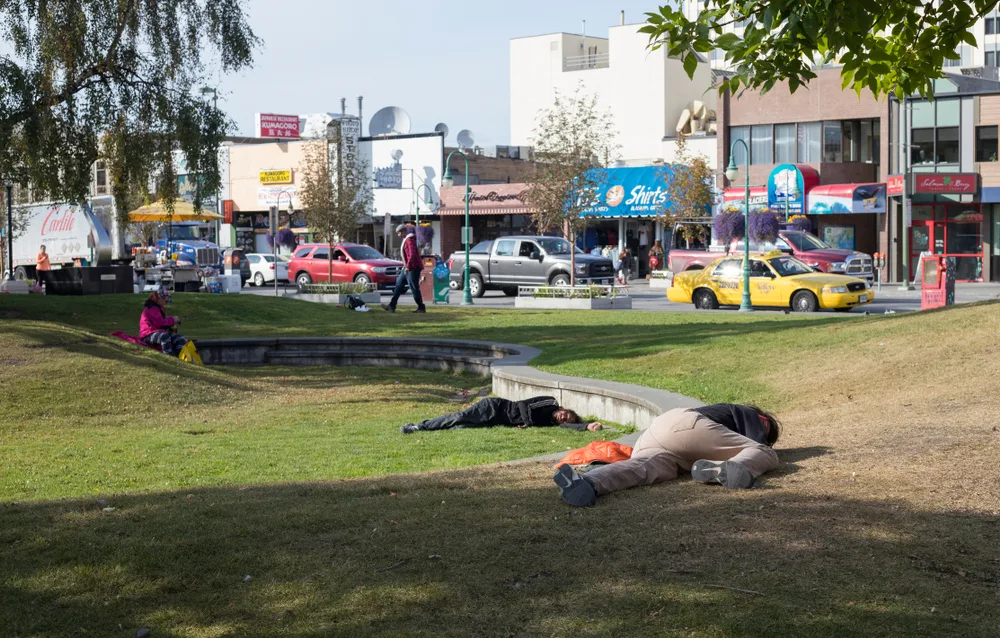
Jay Juno/Shutterstock
Some people are more worried about humans than bears when visiting Alaska, and with good reason. Alaska has the highest crime rate in the United States.
This is not an anomaly, as Alaska has been one of the states with the highest crime rate or the state that tops the list of crime for years, according to FBI data. The violent crime rate is 603.2 incidents per 100,000 people, which is nearly twice the national average.
There are a few reasons why the Alaska crime rate is so high. One has to do with the population dynamics. Since the state is so sparsely populated, any incident of crime will translate to a high rate per 100,000 people.
However, that doesn’t go all the way to explaining Alaska’s high violent crime rate because, objectively, there are many crimes committed in the state.
The sparse population spread out over a large surface area makes it very hard for law enforcement to respond to reports of crime, creating the perfect conditions for violent crime to flourish.
Some remote villages are over a day’s travel from the nearest sheriff — and that’s if the weather is still nice. Societal factors also contribute to the high crime rate in Alaska. The state has a 10.5% poverty rate, which is slightly better than the national average, but it is highly stratified.
Some communities have unemployment rates of over 60%, creating the perfect conditions for crime. Alaska also has high rates of substance abuse, which helps fuel crime.
If the crime rate is so high, then why isn’t this warning plastered everywhere when you think of planning a trip to Alaska?
The truth is that crime almost exclusively affects locals in Alaska.
Geographically, most crime occurs far away from where tourists go. Alaska is one of the few places where more crimes occur in rural villages rather than towns, at least according to local security firms.
While there are certain neighborhoods in big cities such as Anchorage that are best avoided, most crime in Alaska is concentrated in small towns tourists rarely venture to.
This does not do anything to help the people of Alaska, about half of whom don’t feel safe in their own hometowns, but it might help relieve your fears about visiting there.
Theft
Alaska has one of the highest rates of property crime in the United States. Property crimes make up 75% of all crimes committed in the state. Alaska’s property crime rate is much higher than it is in the rest of the United States.
Of the different types of property crimes, the most common is theft, which makes up about 73% of total property crimes. Other major types of property crime are burglaries and motor vehicle theft.
Most types of property crime primarily affect Alaska homeowners and residents, not tourists. For example, porch pirates, or people stealing packages off of people’s front porches, are increasing in popularity, at least according to Alaska neighborhood forums.
Tourists do sometimes get robbed. The most common form of theft affecting visitors to Alaska is mugging. Armed robberies happen sometimes, especially in Anchorage.
According to NeighborhoodScout, Anchorage had 34.55 incidents of property crimes per 100,000 people, which is much higher than the national average. Many of these incidents are theft, including armed robbery.
Anchorage has a high rate of organized crime that is usually drug-related. Usually, these gangs are behind armed robberies.
The good news for tourists is that they usually don’t venture into the touristy parts of town. Make sure you research the neighborhoods you visit and avoid wandering around unfamiliar areas at night.
Pickpocketing rates are low in Alaska, but it’s still good to keep an eye on your valuables, especially when walking around some of the bigger towns.
Make sure you don’t leave your bags and phone unattended. Alaskans dress casually, so don’t bring any designer clothing or fancy shoes, as that will make you stand out.
Sexual Assault
Unfortunately, sexual assault is a prevalent problem in Alaska. The rate is nearly three times as high as it is elsewhere in the United States. In 2020, the rate was 154.8 incidents per 100,000 people, the highest in the nation.
This doesn’t include the many victims whose cases fall through the cracks of the unevenly distributed legal system. There are a few reasons why people think the rate of sexual assault is so much higher in Alaska than elsewhere in the United States.
Alaska has slightly more men than women, and in some regions, such as the Aleutians, there are twice as many men as women. The prevalence of industries such as the oil industry contributes to the macho culture and demographic distribution.
Many cases of rape and sexual assault occur in rural villages, where the police are far away, and perpetrators know they can act with impunity before anyone even comes to take a statement.
Most cases of sexual assault are between people who know each other (domestic violence rates in Alaska are also high). Most cases of sexual assault affect local Alaskan women, not tourists.
Over 60% of the victims are indigenous Alaskan women, even though they are a minority of the population. Even though most cases of sexual assault affect local women, there have been cases where tourists were attacked.
Avoid walking alone late at night in the cities.
If you’re going out to bars, stay aware of your surroundings and limit your drink intake. While hiking or camping, try to travel with at least one other person and make sure other people have your itinerary at all times.
Avoiding Bad Areas
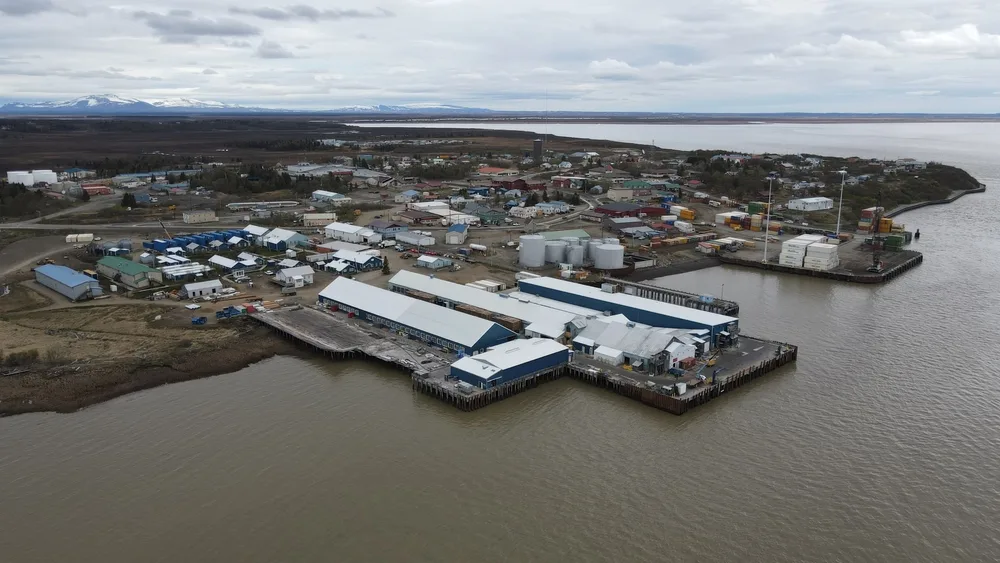
Steven Heyano/Shutterstock
Most tourists naturally avoid bad areas because they tend to be far away from the major attractions. However, it’s good to have them in mind, just in case.
In Anchorage, there are a few rougher neighborhoods where crime rates, especially theft, are high. Mountainview, Fairview, and Airport Heights are some of the neighborhoods that locals warn visitors to watch out for.
These neighborhoods are generally low-income residential neighborhoods where tourists rarely venture anyway. Some small towns are also dangerous. Places with high crime rates include Kotzebue, Kenai, and Dillingham.
You can still visit those areas safely, but you will need a lot of situational awareness. Before planning a hiking route, check with those who have previous experiences and the advice of fellow travelers.
Frequently Asked Questions
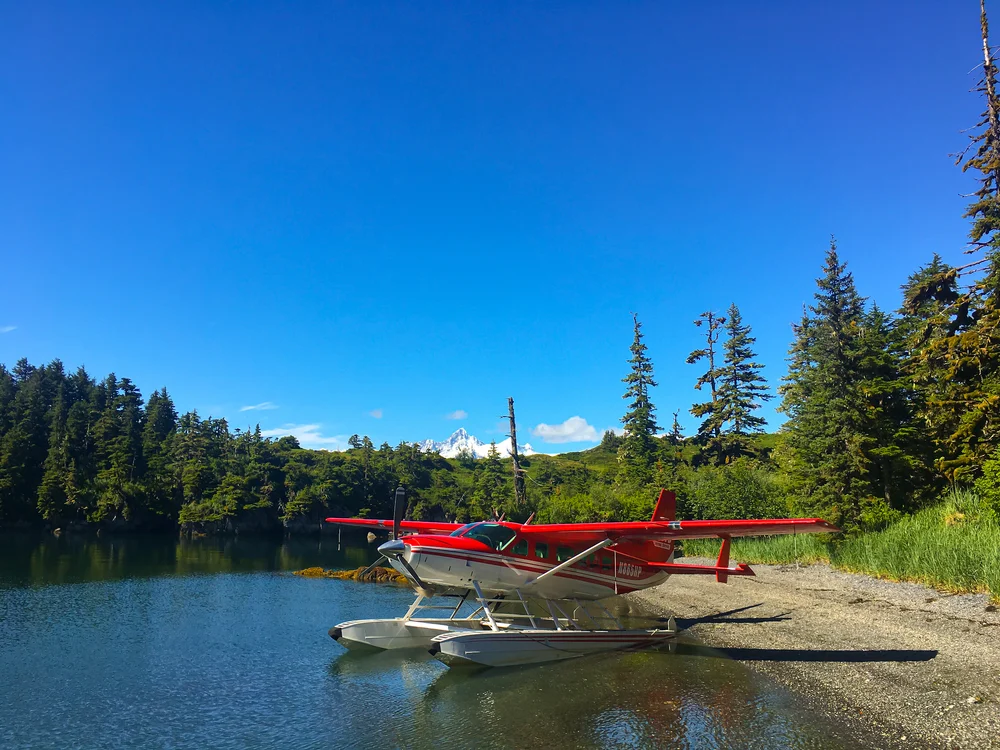
MichalKrata/Shutterstock
Here are some questions other visitors to Alaska have asked:
What kind of crime happens in Alaska?
Many different types of crime happen in Alaska. Some of the most common are aggravated assault, sexual assault, and theft.
Is Anchorage, Alaska, safe to visit?
Anchorage is safe to visit, and tourists often stop by, attracted by the boom town atmosphere and friendly people. Although crime rates are high, most incidents are confined to certain neighborhoods.
What is the number one killer in Alaska?
Don’t expect the answer to this question to be something dramatic, such as bear attacks or gun fights. The number one killer in Alaska is the same as it is elsewhere in the United States — disease. The most common killers in Alaska are cancer and heart disease.
What should you avoid in Alaska?
When in Alaska, avoid getting too close to wildlife. People know to be wary of bears, but moose and other animals can be far more dangerous. Avoid wearing light clothing, even in the summer. Temperatures can drop, so be sure you are prepared with plenty of layers.
Is Alaska safe for foreigners?
Alaska is generally safe for foreigners and receives a lot of foreign visitors drawn to its nature. However, certain parts of the state have conservative attitudes toward newcomers.
So, Should You Travel to Alaska?
Despite high crime rates, you should know that Alaska is safe to visit because crime rarely affects visitors. Just be careful when venturing into nature, as that is the real problem you should worry about. Happy travels!



